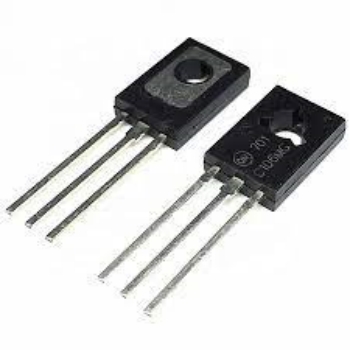C106 thyristor: Mastering the future of semiconductor switches
Introduction to C106 thyristor
C106 Thyristor is a semiconductor switching device, also known as a silicon-controlled rectifier. It is a four-layer semiconductor device with three electrodes: anode, cathode, and gate. The primary function of the C106 Thyristor is to act as a switch in the circuit. When a trigger voltage is applied to the gate, it turns on, allowing current to flow from the anode to the cathode. Once turned on, the current can keep flowing without additional triggering.
C106 Thyristor has the advantages of high withstand voltage, low conduction loss, and high switching speed. Its high withstand voltage capability enables it to work generally in high-voltage environments and ensure the circuit's safety. Low conduction loss can effectively reduce the energy consumption of the course and meet the needs of energy conservation and environmental protection. The high switching speed makes it have superior performance in high-frequency circuits.
C106 Thyristor is widely used in fields such as power conversion, power supply design, and motor control. In the field of power conversion, such as power adapters, chargers, etc., C106 Thyristor can achieve efficient power conversion. In terms of power supply design, it can provide stable voltage output while maintaining low energy consumption. In addition, in the motor control circuit, the C106 Thyristor can achieve fast and precise motor control.
There are some things to note when using the C106 Thyristor. First of all, the model must be selected correctly to ensure that the device can work in a safe and stable state. Secondly, the circuit must be designed rationally, fully considering its working conditions and parameter requirements and avoiding overvoltage, overcurrent, etc. In addition, the operation should also be standardized to ensure the correct connection and setting of the device. At the same time, since C106 Thyristor generates a lot of heat in high-power applications, the heat dissipation device must be designed appropriately to ensure that the device's temperature is controlled within a safe range. Finally, preventive measures should be taken to avoid misoperation, such as installing protection circuits to prevent accidental damage to the device.
In short, the C106 Thyristor is a vital semiconductor device with broad application value and use prospects. Understanding and mastering its basic concepts, characteristics, application fields, and precautions will help to play its role better and promote the development of the semiconductor industry.

Characteristics of c106 thyristor
1. High withstand voltage: The C106 thyristor can withstand higher voltage, allowing it to work generally in high voltage environments and ensuring the circuit's safety.
2. Low conduction loss: Compared with other types of semiconductor devices, the C106 thyristor has lower conduction loss, which can effectively reduce the energy consumption of the circuit and meet the needs of energy conservation and environmental protection.
3. High switching speed: The C106 thyristor has a fast switching speed, which makes it have superior performance in high-frequency circuits.
Application fields of c106 thyristor
1. Power conversion: The C106 thyristor is widely used in power conversion fields, such as power adapters, chargers, etc. It can perform efficient power conversion at high voltages and improve power efficiency.
2. Power supply design: In power supply design, the C106 thyristor can provide stable voltage output while maintaining low energy consumption.
3. Motor control: In the motor control circuit, the C106 thyristor can achieve fast and precise motor control.
Precautions for using c106 thyristor
1. Correctly select the model: When selecting the C106 thyristor, choose the appropriate model according to the actual circuit requirements to ensure that the device can work in a safe and stable state.
2. Reasonably design the circuit: The circuit using the C106 thyristor should be designed reasonably, fully considering its working conditions and parameter requirements, and avoiding overvoltage, overcurrent, etc.
3. Operating specifications: When installing and using the C106 thyristor, follow the product manual and operating specifications to ensure the correct connection and setting of the device.
4. Heat dissipation design: Since the C106 thyristor will generate a lot of heat in high-power applications, the heat dissipation device must be designed appropriately to ensure that the device's temperature is controlled within a safe range.
5. Prevent misoperation: In the circuit design involving the C106 thyristor, preventive measures should be taken to avoid misoperation, such as installing protection circuits to prevent accidental damage to the device.
As an essential semiconductor device, the C106 thyristor has the advantages of high withstand voltage, low conduction loss, high switching speed, etc. It is widely used in power conversion, power supply design, motor control, and other fields. In practical applications, it is necessary to pay attention to the correct selection of models, reasonable circuit design, standardized operations, good heat dissipation design, and prevention of misoperation to ensure that the C106 thyristor can exert its excellent performance in a safe and stable state. With the continuous advancement and innovation of technology, the C106 thyristor will play a more significant role in the future semiconductor industry.
